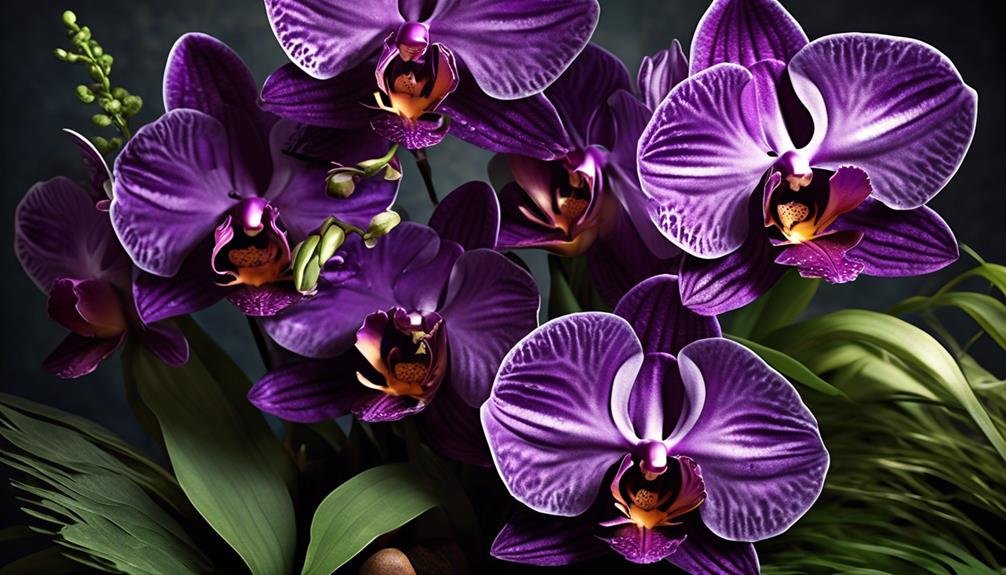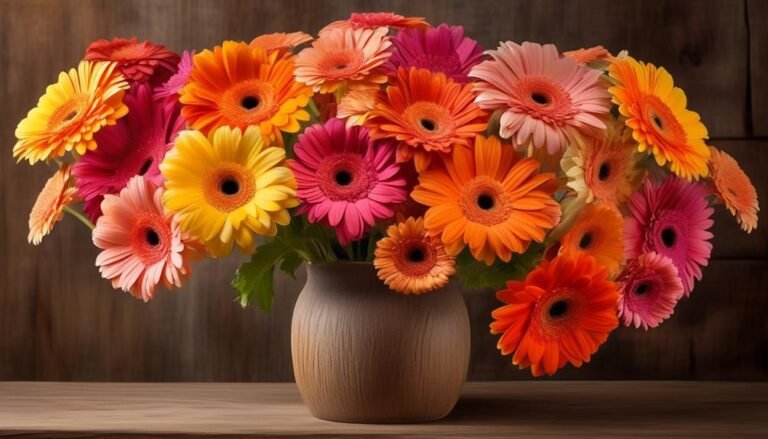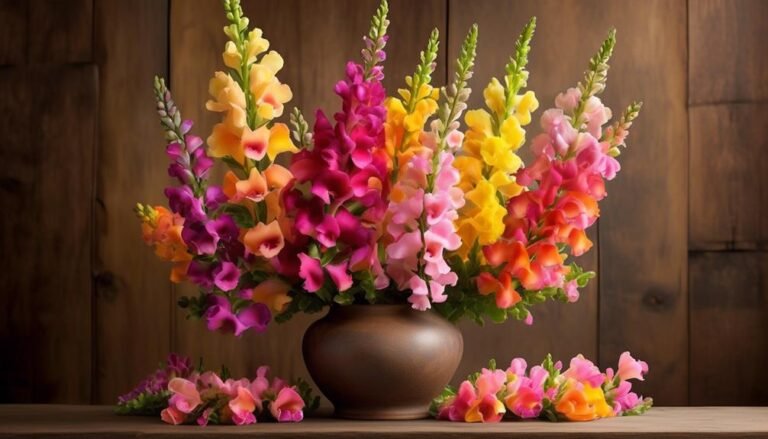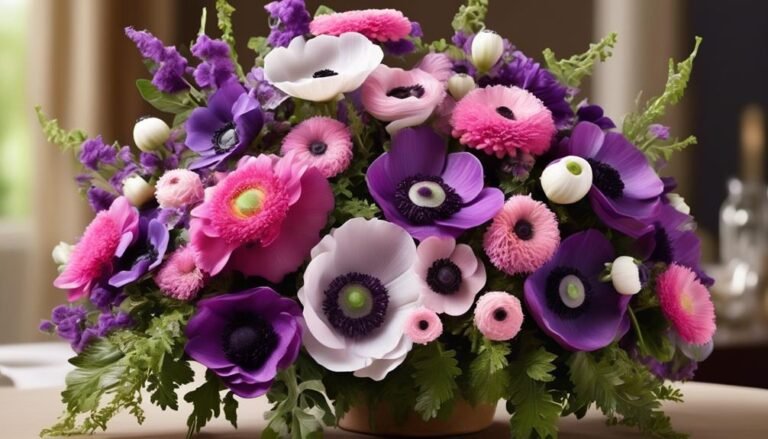Popular Types of Florist Flowers – Orchid
Discover the alluring world of orchids, where elegance and beauty come together in delicate blooms.
Orchids are a popular choice among floral enthusiasts, known for their captivating allure and intriguing scientific intricacies.
From the stunning variety of colors and shapes to their seasonal nuances, orchids continue to enchant and fascinate.
Let's delve into the fascinating world of these perennial favorites and uncover their timeless appeal.
Scientific Name
The scientific name Orchidaceae sheds light on the unique characteristics of orchids. Derived from the Greek word 'orchis,' meaning testicle, it refers to the shape of their roots. This name represents the vast diversity of orchids, with around 28,000 accepted species, making them one of the largest families of flowering plants. Each orchid genus and species showcases distinct characteristics and requirements, highlighting their fascinating nature.
Orchids have a rich history of cultivation, dating back to ancient times. They've held symbolic and cultural significance in various societies. In ancient Greece, they were linked to fertility and virility due to their resemblance to testicles. Victorian England associated orchids with luxury and refined taste, while in contemporary times, they're admired for their rare and delicate beauty.
Throughout history, orchids have been cherished for their exotic allure and ornamental value. Their symbolism and cultural significance have made them popular choices for gifts and decorative displays. Understanding the scientific name Orchidaceae provides insight into the rich history and symbolism of these captivating flowers.
Background History
Orchids have a rich history dating back to ancient civilizations such as the Aztecs and ancient Chinese dynasties. They were highly revered and considered a symbol of love, luxury, and beauty in these cultures. Orchids also held significant cultural and symbolic importance in Greek mythology, associated with fertility and virility.
Throughout history, orchids have been linked to various cultural significances, with different species representing different virtues and traits. The allure and symbolism of orchids led to their incorporation into various rituals, traditions, and medicinal practices in many cultures.
The history of orchid cultivation reveals the enduring fascination and admiration for these exquisite flowers. Their symbolism and cultural significance have transcended time and continue to enchant people across the globe. The intricate history of orchids, intertwined with diverse cultures and traditions, adds to the allure and mystique of these botanical wonders.
Physical Description

Orchids are a diverse and vibrant group of flowers, coming in various sizes, shapes, and colors such as brown, red, purple, pink, and orange. They're known for symbolizing love, luxury, beauty, and strength in different cultures.
Orchid flowers can range from small and delicate to large and showy, with shapes varying from round and full to slender and elegant. Their extensive color range adds vibrancy to any floral arrangement.
Lifespan-wise, different orchid types have varying lifespans, from two to three weeks to up to two months. The leaves of orchids also vary, with some having long, narrow leaves with multiple branches.
In addition to their physical diversity, orchids hold cultural significance and are often associated with love, luxury, and beauty. Orchids also utilize intricate reproductive strategies, such as specialized pollination mechanisms and unique flower structures, contributing to their evolutionary success.
Understanding the physical attributes, symbolism, and reproductive strategies of orchids enhances appreciation for these exquisite blooms.
Colours and Characteristics
Orchids are a diverse and vibrant flower, known for their captivating range of colors and elegant characteristics. They hold significant symbolism in various cultures, representing love, luxury, and beauty, making them a popular choice for special occasions like weddings and celebrations. Through selective breeding and tissue culture methods, orchids have been developed in a wide array of colors, ranging from subtle pastels to vibrant hues, catering to the diverse preferences of floral enthusiasts.
In addition to their colorful blooms, orchids are admired for their captivating shapes and patterns. The delicate and intricate forms of orchid flowers, such as the phalaenopsis with its butterfly-like appearance, have inspired artists, poets, and designers for centuries. Orchids with scented flowers add an extra sensory dimension to their appeal, enhancing the overall experience of their beauty.
Varieties Available
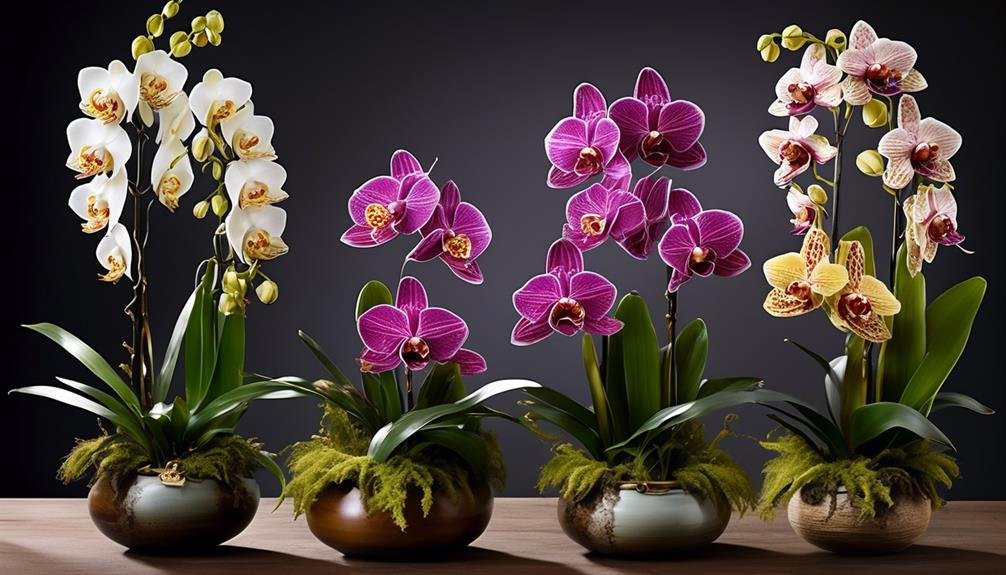
Orchids come in a wide range of varieties, each with its own unique characteristics and cultivation needs. Some orchids require specific temperature and humidity conditions, while others thrive in more general settings. Understanding the diverse needs of different orchid varieties is crucial for successful cultivation and maintenance.
The symbolism of orchids in different cultures adds to their appeal. In many Asian cultures, orchids symbolize love, beauty, and elegance, while in ancient Greece, they were linked to virility and male fertility.
Exceptional orchid varieties like Epidendrum, Ludisia, and Masdevallia offer the opportunity for unique floral arrangements. Understanding their characteristics and blooming periods is essential for creating captivating designs.
Orchids are available in a wide array of colors, including white, brown, orange, pink, and purple, offering a broad spectrum for creative floral arrangements. Some orchids, like the Phalaenopsis and Cattleya, are known for their long-lasting blooms, making them suitable for decorative purposes or gifting. With flowering periods ranging from two weeks to several months, orchids allow for varied displays and longevity in floral designs.
Seasonal Availability
Orchids come in a variety of species with diverse blooming seasons, and their availability depends on environmental conditions. Most orchids bloom once a year, typically lasting several weeks to a few months. Understanding the specific blooming season of each orchid variety is crucial for ensuring a consistent supply of these exquisite flowers.
Cultural significance plays a significant role in orchid cultivation, as they're often used in traditional ceremonies, religious rituals, and celebrations. In some cultures, orchids symbolize fertility, elegance, and refinement, emphasizing the importance of seasonal availability for these meaningful occasions.
Understanding the seasonal availability of orchids is crucial for successful growing techniques. Proper care during the blooming season, such as providing the right amount of sunlight, water, and nutrients, is essential for ensuring healthy growth and vibrant blossoms. Additionally, being aware of the specific environmental requirements during the flowering period can help maximize the orchid's ornamental value and cultural significance.
Care Tips

Taking care of orchids requires adjusting watering based on the season and the plant's root condition to prevent overwatering and root rot. Proper drainage is crucial to prevent water from pooling around the roots. Using distilled or boiled and cooled water to mist orchids creates a humid environment for healthy foliage, avoiding the harmful salts and minerals in regular tap water.
Orchids thrive in bright, indirect light, so it's important to provide the right amount of indirect sunlight to avoid scorching the leaves and promote healthy growth. Conducting the shadow test can help determine if the light level is appropriate for the specific type of orchid, ensuring proper photosynthesis and overall plant health.
Maintaining a stable environment is important for orchid growth, so keep them away from drafts and fruits to prevent temperature fluctuations and exposure to ethylene gas, which can lead to premature flower drop and bud blast.
Regularly inspect orchids for pests such as mealybugs, scale, aphids, and spider mites, and treat them promptly to prevent infestations.
Are Rhododendron Flowers Suitable for Use in Floral Arrangements Like Orchids?
Yes, Rhododendron flowers are suitable for use in floral arrangements like orchids. Both types of florist flowers are beautiful, sturdy, and come in a variety of colors, making them perfect for creating eye-catching bouquets and centerpieces. Their versatility and long-lasting blooms make them a popular choice for floral designers.
Conclusion
The Phalaenopsis orchid, commonly referred to as the 'moth orchid', is a popular option for floral arrangements due to its enduring blooms, wide range of vibrant colors, and graceful forms.
These orchids can thrive all year with proper care, bringing a touch of elegance and charm to any space.
Their popularity and accessibility have made them a top choice for both florists and flower enthusiasts.
With their long-lasting blooms, variety of colors, and elegant shapes, Phalaenopsis orchids are a preferred choice for adding beauty and sophistication to any setting.
